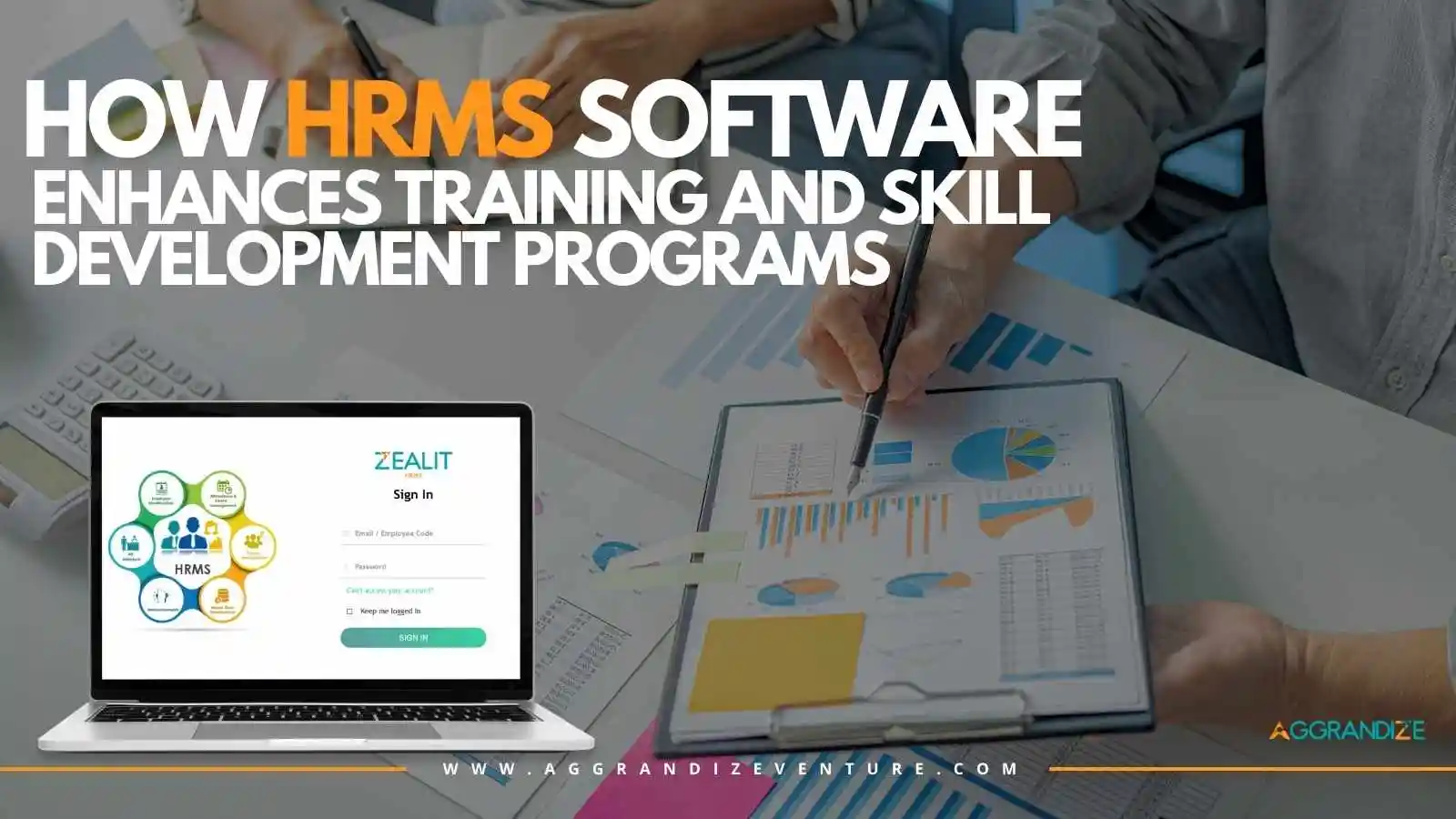HRMS
How HRMS Software Enhances Training and Skill Development Programs
Date: 22-01-2025
With the world-wide market so competitive, businesses are now constantly looking for ways to
upskill their workforce and be ahead of industry trends. Training and skill development became a
must have for organizations that would in turn make their people agile, skilled and future ready
which is why it has become a crucial part of an organization's strategy in acquiring new
workforce skills. However, traditional training approaches are not enough to meet the modern
demands of these days. Here is where Human Resource Management System (HRMS) software comes in.
This powerful tool has revolutionized training programs by allowing organizations to manage,
deliver, and evaluate them through a streamlined and very highly effective process which makes
all employee's skill more upgraded. The most suitable variant of economic development is
described below
Let’s explore in detail how HRMS software transforms training and development in the workplace.
Employee training and development refers to organizational efforts to enhance employees’ skills, knowledge, and competencies to meet job demands and career aspirations. It involves structured programs designed to:
• Improve Performance: Equip employees with tools and techniques to excel in their roles.
• Enhance Productivity: Streamline workflows and reduce errors through better knowledge and training.
• Foster Growth: Encourage personal and professional development to boost morale and retention.
Types of Employee Training
1. On-the-Job Training: Real-time learning in the workplace.
2. Workshops and Seminars: Group sessions focusing on specific skills or topics.
3. E-Learning: Digital platforms offering remote and self-paced learning modules.
4. Leadership Training: Programs designed to groom future managers and leaders.
Employee training is not just a necessity but a strategic advantage for organizations. HRMS software simplifies and enhances these initiatives for several reasons:
1. Rapid Technological Advancements
New technologies are continually being made, so the organization's staff should always be well-trained and adaptable to these digital tools and platforms. HR software teaches and guides on new technologies through real-time updates and training.
2. Bridging Skill Gaps
HRMS software tracks the existing skill gaps by analyzing data and makes the necessary recommendations on the various online training programs which best suit the employees.
3. Employee Retention and Satisfaction
Investing in employee development signals that the organization values its workforce, improving retention rates and job satisfaction.
4. Regulatory Compliance
Most industries set regulations that employees have to adhere to by undergoing compulsory training to comply with them, HRMS software ensures these requirements are met efficiently.
5. Competitiveness in the Market
A well-trained workforce enables organizations to outperform competitors and adapt to market changes swiftly.
1. Centralized Learning Management
To the smallest details HRMS software provides an all in one platform for all training activities. Employees can access materials, keep track of progress, and participate in evaluations from the same dashboard.
2. Personalization of Training Programs
HRMS software creates modules that can easily be customized based on individual roles, objectives, and skill levels of the employees making learning relevant and engaging.
3. Cost-Effective Solutions
Going digital with training materials and automating administrative tasks is a big measure in the reduction of training expense.
4. Real-Time Progress Tracking
HRMS offers the tools for in-depth analyzes and reports to the managers, which in turn can help readjust some of the training programs that are not in line with the set goals.
5. Enhanced Employee Engagement
Learning process features such as gamification and simulations that are interactive allow employees to be in the ongoing and motivated part of their training.
6. Seamless Integration with Existing Tools
Most HRMS platforms integrate with e-learning systems and other business tools, creating a cohesive ecosystem for employee development.
7. Improved Training ROI
By aligning training outcomes with business goals, HRMS ensures organizations maximize their investment in employee development.
Personalized Learning Paths
Every employee brings in unique skills, goals, and learning paces in the organization. HRMS software enables businesses to come up with personalized training packages that meet individual needs. Thus employees are exposed to the materials and the role-specific content, corresponding with the career goals they have.
Streamlined Onboarding for New Employees
Onboarding sets the tone for an employee’s journey in an organization. HRMS software streamlines this process by offering:
• Preloaded training materials.
• Interactive onboarding modules.
• Automated progress tracking to ensure every new hire is set up for success.
Automated Skill Gap Analysis
HRMS software involves the use of data analytics to determine the skills gap among a team or department. The software selects the most suitable training programs based on the results of this examination, which means employees are always ready to deal with the problems that arise in the organization.
Integration with E-Learning Platforms
HRMS suite modules connect to Coursera, Udemy, and LinkedIn Learning without technical difficulties. It makes the whole e-learning process simpler and gives more space for employees to learn effectively and efficiently.
Progress Tracking and Feedback Mechanisms
By using the built-in data analysis tools, HRMS software helps managers understand how employees are performing in real-time. It allows employees to receive feedback at an appropriate time which will then let them develop a sense of never-ending getting better.
HRMS software has made it much easier for businesses to approach training and skill development in an entirely new way. With the help of automation, learning can be individualized and the usage of data-driven insights means that the technology can give the employees the liberty to make the most of their time and thus increase the company’s productivity. Therefore, as time goes on, the implementation of HRMS software will be a non-negotiable trend for achieving a business’s success.